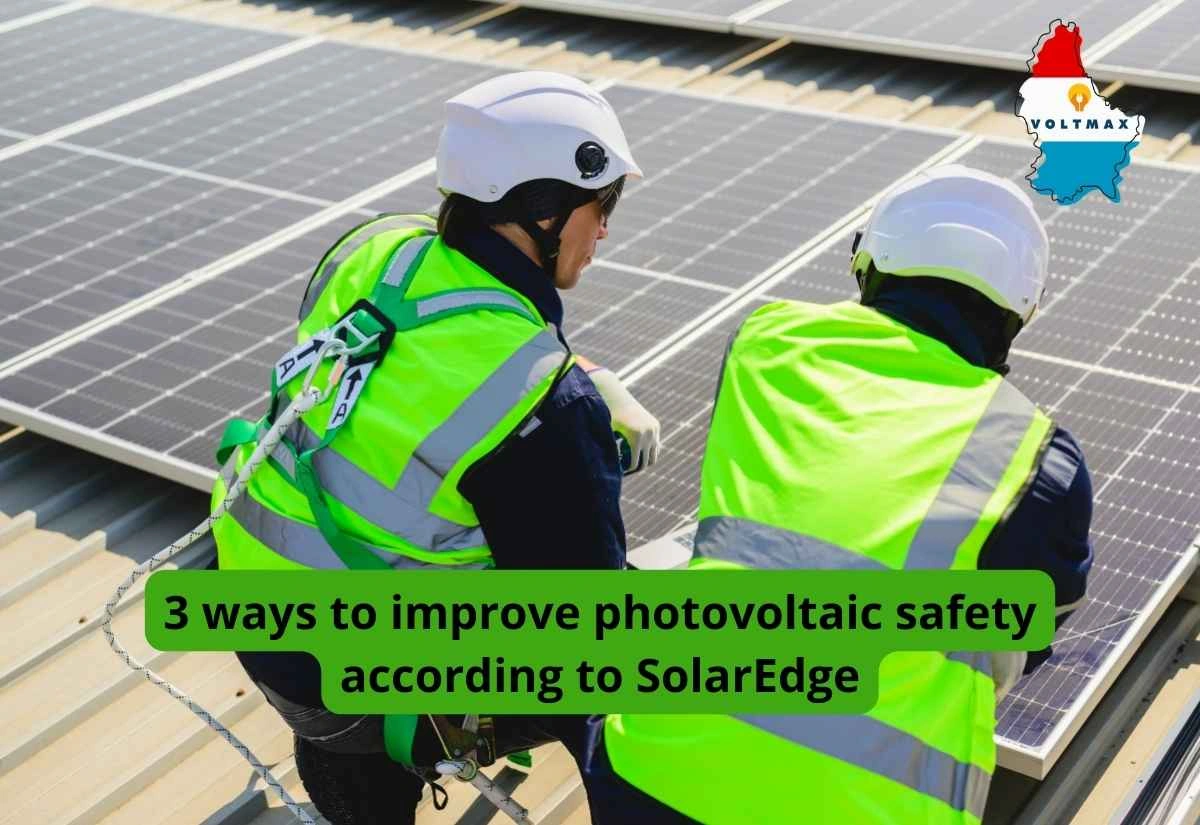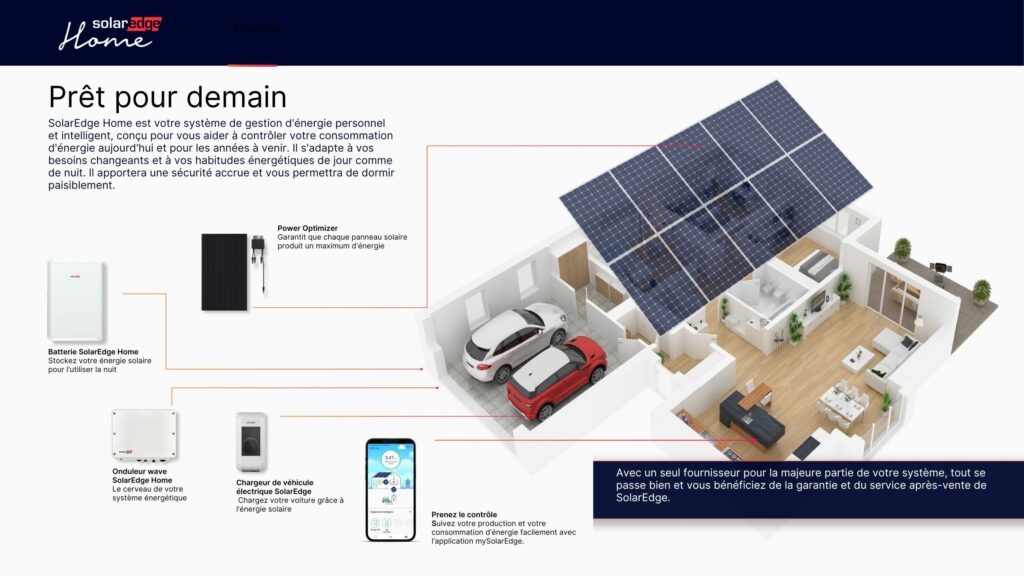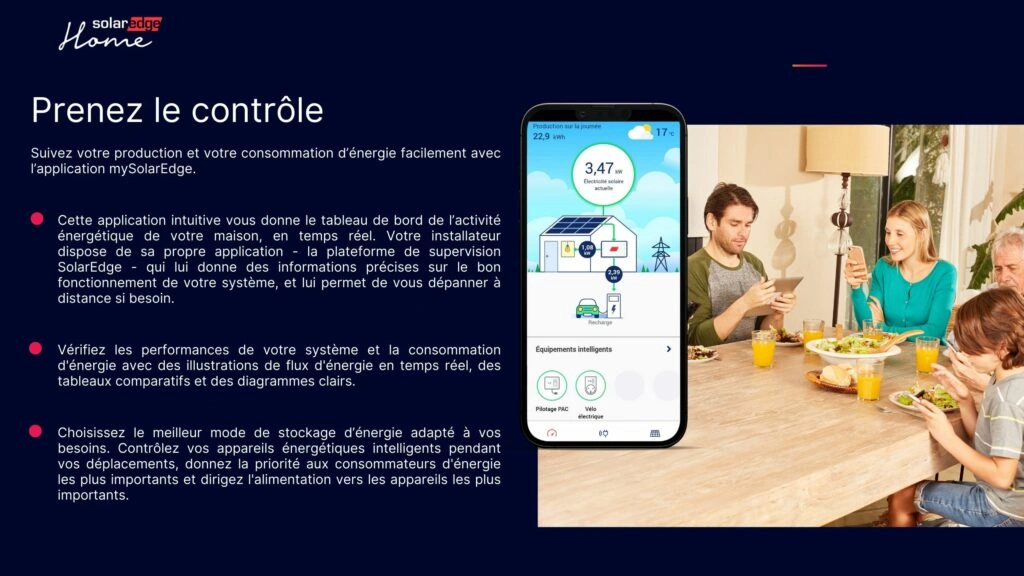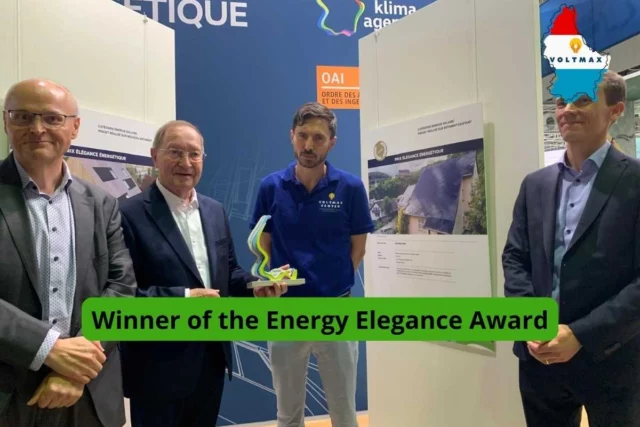
The installation and maintenance of a photovoltaic system are generally safe processes. However, just like the cars we drive, some solar systems offer better photovoltaic safety features than others. To know what to watch out for, it is important to understand the basics of how a photovoltaic system works.
Table of contents
ToggleHow does photovoltaics work? How does solar energy work?
Basics: A photovoltaic system consists of solar modules (also called photovoltaic panels) and an inverter. Photovoltaic modules convert solar radiation into direct current (DC). The inverter then converts the direct current into alternating current (AC), which powers our homes, businesses, and other buildings. When the sun is not shining, energy is supplemented by the grid.
Photovoltaic modules generate high voltage all the time the sun is shining, even if the main switch is turned off. This is important to keep in mind because, in the unlikely event of a fire, high DC voltages could hamper emergency services.

Solar Power Precautions + SolarEdge
SolarEdge photovoltaic systems have a suite of built-in safety features that meet the highest industry standards. Here are three of these features:
1. SafeDC™: Increased security of each module.
Traditional string inverters generally have limited safety features. To meet photovoltaic safety standards, they may require additional equipment, increasing the cost and complexity of the system.
SolarEdge has developed power optimizers attached to each module to maximize its performance, transforming them into intelligent modules. It improves the efficiency of photovoltaic panels by individually monitoring and optimizing the operation of each panel in the installation. Thanks to this, even if there is a shadow on one panel, the other panels will still work at full capacity.
As part of this solution, SolarEdge inverters have a built-in SafeDC™ safety feature that automatically reduces the voltage on each module to 1V when the inverter is turned off. This means that during installation, maintenance, emergency situations or any situation in which the inverter is disconnected from the grid, the DC voltage drops to a safe level, protecting people and property. In summary SolarEdge SafeDC™ complies with several international safety standards.
2. Detection and interruption of an electric arc
Arcing in photovoltaic systems can occur when connectors or cables are corroded or improperly connected, causing sparks and creating a fire hazard. This can also happen as solar systems age, cables degrade, or animals gnaw on them. Modern safety regulations require arc flash detection to minimize fire risks. In the United States, UL 1699B requires that arcs be detected as they occur. In Europe, the IEC 63027 standard is under development, but insurance companies may require its use.
Traditional inverters require additional arc fault detectors, which increases costs. However, SolarEdge has a built-in arc detection feature that identifies arcs and shuts down the inverter in accordance with US standard UL1699B. This increases personal safety and also protects equipment and buildings.

3. SolarEdge monitoring platform.
Certainly Security meets convenience with module-level monitoring and remote troubleshooting. The SolarEdge monitoring platform provides installers and homeowners with complete visibility into system performance, enabling module-level control, including automatic alerts, remote troubleshooting and comprehensive reporting. This eliminates the need for extensive on-site diagnostic work, which can be dangerous.
Watch the video prepared by SolarEdge:
Out of concern for our customers and especially for the safety of photovoltaic installations and our customers’ homes, VOLTMAX SARL bases its solutions on SolarEdge systems. Make an appointment with our advisor and discover all the advantages of these solutions.
Contact, if you are looking for:
- inverters,
- optimizers,
- energy storage
- devices providing backup power in the event of a power outage,
- smart energy meters
- chargers for electric cars that adjust the power of the energy consumed to the energy demand of the house.
VOLTMAX SARL: Contact our advisors or fill out the form on our website: www.voltmax.lu







